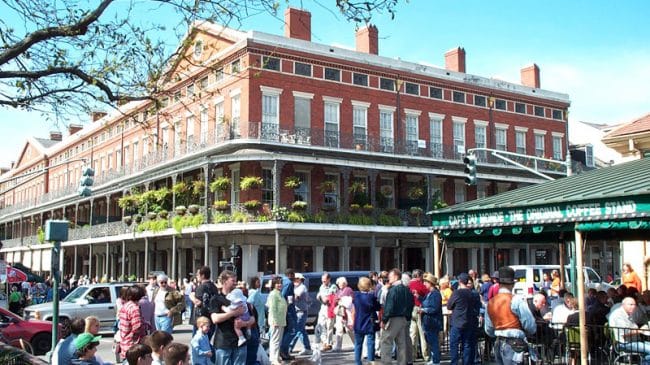Though the jury may be out on some aspects of New Orleans’ rebuilding 10 years after Hurricane Katrina devastated the city, policymakers on both sides of the aisle have agreed that its educational turnaround is incredible.
President Barack Obama, Louisiana Gov. Bobby Jindal, and at least two foreign parliamentary delegations have noted the remarkable successes of New Orleans’ educational reforms.
Opponents have tried equivocating their way around the multiple objective measures that tell an inspirational story of recovery. My colleague Savannah Robinson rounded up those debates here. But at the end of the day, the data talks and shows students are benefitting from the reforms. Now it’s time to spread New Orleans’ education practices far and wide.
Before Hurricane Katrina, New Orleans’ education system was a national embarrassment, one of the worst performing in the country. As tragic and devastating as the storm was, it gave leaders an opportunity to rebuild the school system from scratch. The worst performing schools were closed or taken over by the state-run Louisiana Recovery School District (RSD). The RSD launched a vigorous reform operation that turned failed schools into more curriculum-autonomous charter schools, with the RSD only relinquishing control after the schools sufficiently improved their achievement.
The RSD also practiced student-based budgeting, allowing school funding to follow each individual child, ensuring equal per-pupil funding levels and positive competitive forces between schools. An easy-to-understand “A” through “F” letter-grading system based on student achievement helped parents understand which schools were best-serving their children. And as the RSD let more and more schools return to local control, New Orleans instituted a common enrollment application, eliminating zip code restrictions so that parents weren’t stuck with the nearest school. Parents could choose the best school for their kids regardless of where it was or where they lived.
Because of the RSD’s turnarounds, over 95 percent of New Orleans’ students now attend charter schools. The city’s charter schools offer many special programs and areas of focus, like arts and sciences to let students and parents choose the educational experiences they most value. Instead of adhering to rigid district-wide organizational patterns, New Orleans’ charters have had the freedom to experiment with the best models to help their students succeed.
The results have been astounding. New Orleans’ achievement in core subjects like math and reading, along with less heavily-tested disciplines like science and social studies soared from well below average to above the state average in only 10 years.
New Orleans also improved dramatically compared to other districts affected by the hurricane. In addition to the improved test scores, the graduation rates, ACT scores, and college-admission rates of New Orleans’ students have also significantly improved. The results are so remarkable that Tulane University economist Doug Harris commented that “on almost every measurable [educational] outcome” he has “never seen an effect of this size before.”
New Orleans’ reforms shook several fundamental assumptions about public education to their bedrock. It may have taken a disaster to implement these policies, but we shouldn’t need one to expand the impact of proven reforms.
Reform-minded cities and states like Boston, Nashville, and Washington, D.C. are already embracing New Orleans’ example and expanding public charter school options for their students. Unfortunately, many states impose caps that limit the number of charter schools, hampering the proven benefits these schools often bring to poorer communities. Charter schools aren’t a panacea to our educational woes and don’t always surpass their traditional public school counterparts, but charters’ flexibility and accountability make them easier to improve or shut down far faster than traditional neighborhood public schools.
Michigan Gov. Rick Snyder recently proposed a common-enrollment system to allow kids in Detroit to attend the public or charter school of their choice. Letting funding follow them to their chosen school is just as important. Student-based budgeting has already been implemented in over 30 school districts across the country, many large and urban, similar to New Orleans and the Louisiana Recovery School District’s model.
Cities as varied as Minneapolis and Oakland have made student-based budgeting even more powerful by maximizing their principals’ budget autonomy over the money. Allowing the decision-makers closest to the kids decide where spending is needed is an effective way to help students, ensure flexibility and improve accountability at individual schools.
New Orleans’ educational renaissance showed us an overdue alternative to the status quo that has stalled American public education. New Orleans’ system instilled competition and gave independent school operators incentives to innovate and improve.
The transformation that has taken place in the city should inspire other districts. School choice, student-based budgeting and school-level control of funding can help revolutionize the country’s tired public school systems. These fixes should become the new norm for public schools, not just tolerated exceptions educators turn to after historic natural disasters.
